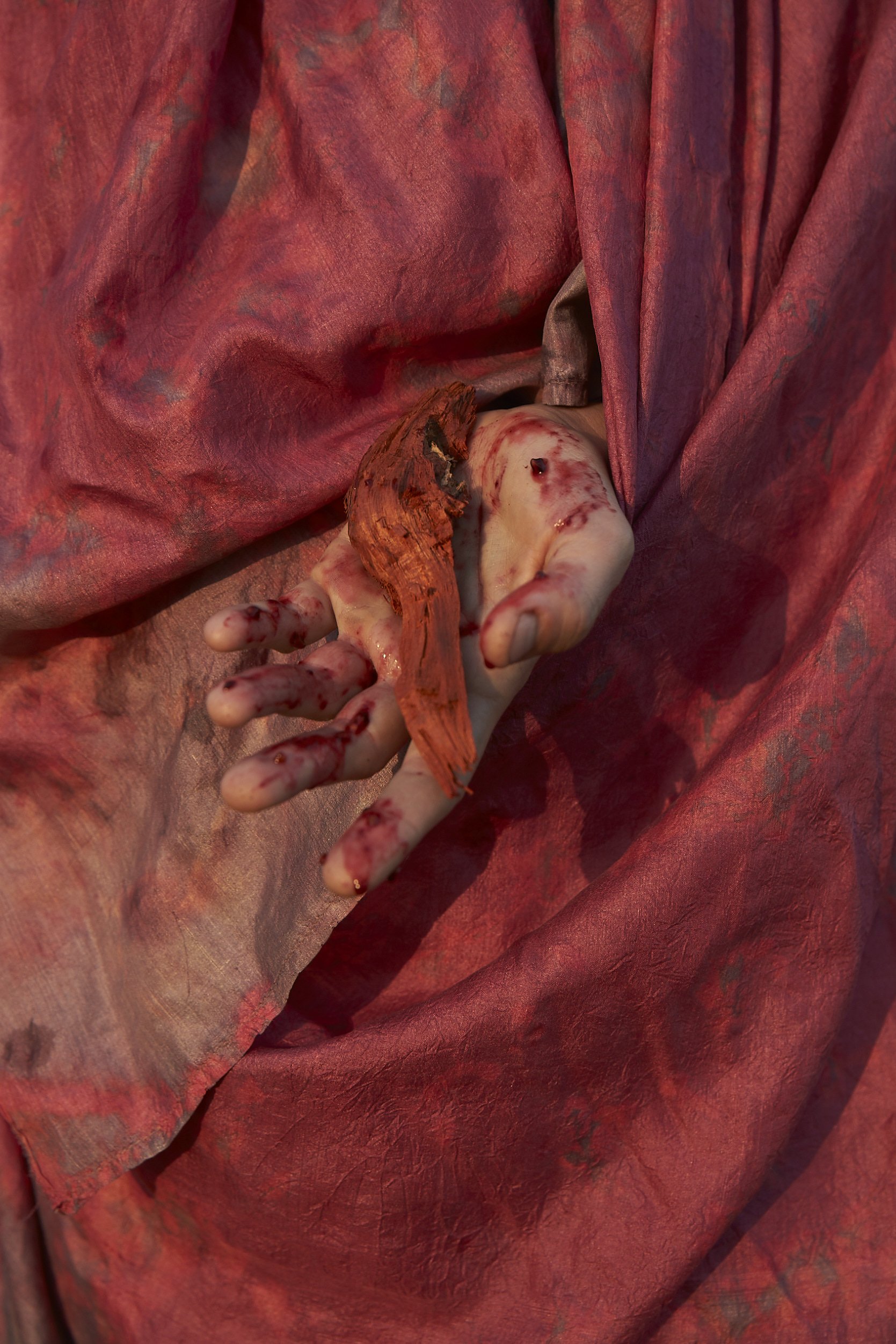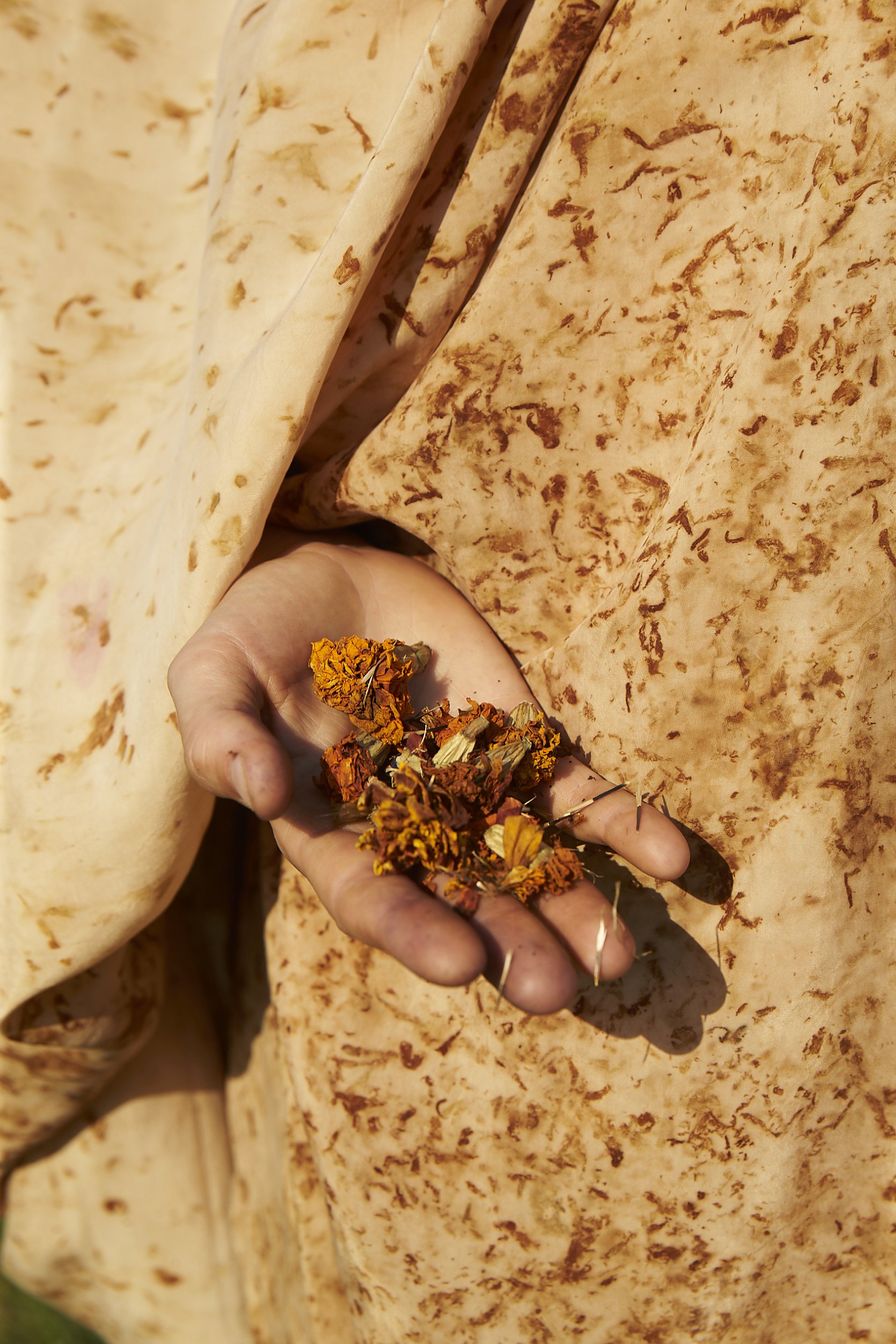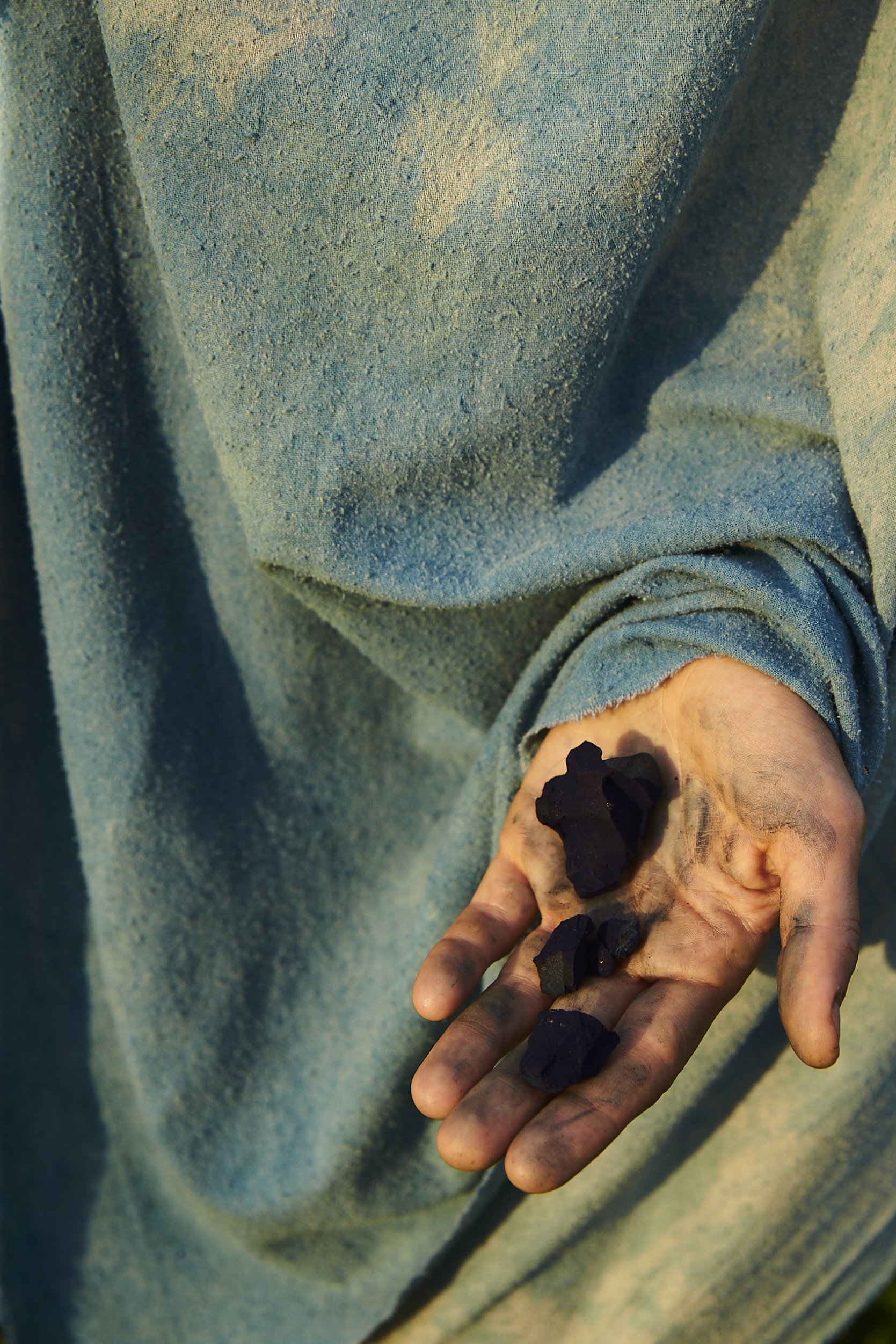Conscious Color
“It’s the excitement, the mystery, where it’s all about the unknown and the conversation and collaboration with the plants. It’s always changing and always different. Waking up to see the dye bath in the morning - that is what gets me out of bed.”
For Hannah Ross, the regenerative textile artist behind Conscious Color, natural dyeing is a whole cosmos, a bundling of expression and exploration with implications at every level - history, individual, and the future of our communities and the textile industry at large. A return to our roots, where the cycles of nature drive what hues we can don and where we’re asked to slow down and listen to the materials we use, natural dyeing offers a mode of creation that honors where we come from and where we can go, creating a garment with a profoundly positive impact on both our bodies and the planet. Driven by her belief that shared vision can enact change, that solutions are discovered when individuals come together as a unit to see the problem, Conscious Color was founded as an umbrella service for regenerative textiles. Its goal, to raise consciousness and knowledge of natural dyeing and the impact it can have on individuals, brands, and ultimately our system of creation and disposal.
After graduating from Pratt, Hannah began her career working in all facets of design - with costume houses, independent designers, in styling, textile design, and the like. As the in-house dyer at New York City Ballet, she “loved working on a team and making everything hands on, start to finish,” but this level of production always comes at an expense. After an industrial hygienist deemed the dye lab unfit to work in, primarily due to the toxicity of the chemicals and poor ventilation, Hannah found herself asking: “If I’m not protected at this highest level of design, then who is?”
In our modern world of fashion, a connection to material and nature “is always put on the back burner. It’s all about how something looks and how fast we can get it.” Hannah, self identifying as ‘anti-fashion,’ explains how “fashion is defined as trend based apparel, it is designed to go out of style. Fashionable in one moment, the next, out of fashion. That has been the traditional system, and it perpetuates a trend based cycle.” On average, Americans throw away 81bs of clothing each year. This cycle needs to be broken, not ‘sustained,’ and a whole new one built in its place - one with regeneration at its forefront. With Conscious Color, Hannah is “creating systems and processes that regenerate the soil, the lives of the creators, the processes that are not harmful for the earth.” And with natural dyeing, she creates an urgent message to slow down, to honor where garments come from and the life they can have after us. It’s not a quick fix, for merely switching all of our synthetic dyes to natural ones would exhaust our resources on earth - there is simply not enough land to replace that amount of production, but instead, “the biggest idea that comes from natural dyes is slowing down - it’s not a bandaid, it’s a slow integration of these dyes into a supply chain that will teach makers and consumers to not produce as much, produce with more care, and not throw away [garments] because [they] took effort and time to dye.”
Hannah is fascinated by natural colors, how “nature doesn’t offer us a full spectrum,” it gives us just what is right for our cycles and seasons. In our present day, we have negated this reality and given in to color-gluttony, too accustomed to being able to pull from an unlimited, unnatural range, as “that excess and expectation leads to only more overproduction.” We have morphed our perception of what we want and need to a point of disconnection from the colors and their origins and places themselves. “It’s about not viewing color as one of the same,” Hannah says, “it is a life long and generation long study. You could study color indefinitely.” And in turn, that expansiveness, that inability to reach infinite perfection and ability, lends itself to slowing down, necessitates a re-education that is about returning to a more mindful way of creation.
“Even if we know beige is the most ‘sustainable’ color to wear, we are not simply going to choose to stop using and wearing other colors,” and nor should we. Color is innate to our expression, individuality, and even our history. But we can choose to wear and use it differently.
Broadly, Hannah defines natural dyeing as the “ancient craft of coloring cloth with plants, minerals, insects, waste products, foraged and cultivated. It’s an alchemical process of mixing and combining the correct ingredients to achieve long lasting natural color.” The notion many have that natural dyes are fickle and ever-fading is largely false: “if you practice the correct preparation and careful research and know your materials, the colors can last for generations.” She shares with me her experience visiting, Yagul, an archaeological site in Mexico, where the walls of the structure are painted with a bright yellow pigment. Indigenous people created the perfect mixture of natural pigment, minerals, and clay that has lasted hundreds of thousands of years.” Beyond their resiliency, natural dyes’ medicinal properties can seep into your skin, while the colors are also UV resistant, antimicrobial, and can repel insects.
Conscious Color is an endeavor in returning to the artist’s own roots. Hannah grew up in the Hudson Valley, working on a stone fruit farm and embarking on a journey towards realizing the importance of communing with nature; this is a return home, to a studio and art practice wholly tied into the local area, from collaborating with other New York artists and creators to collaborating with the land itself. At its core, Conscious Color is about community. “The creative process is a collaboration,” Hannah says, and she invites you to do just that with her.
Author, Madison Brito




